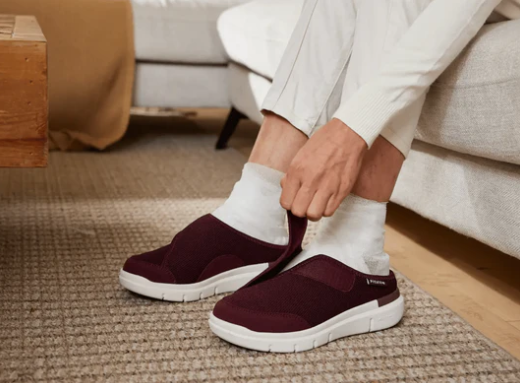Notifications

5 minutes, 11 seconds
-238 Views 0 Comments 0 Likes 0 Reviews

For men living with diabetes, the right footwear isn't just about comfort—it’s about protecting your feet from serious complications. Diabetes can lead to nerve damage (neuropathy), poor circulation, and a greater risk of foot injuries and ulcers. That’s why diabetic shoes mens are specially designed to reduce pressure points, improve stability, and support overall foot health.
In this guide, we’ll explain what to look for in diabetic shoes and highlight some of the best features available for men today.
Men with diabetes face a unique set of challenges when it comes to foot care. Even a small blister or cut can become a major problem due to slower healing and reduced sensation. Diabetic shoes help prevent these issues by offering:
Extra depth and width to accommodate swelling or foot deformities.
Seamless interiors to reduce the risk of irritation or friction.
Soft, breathable materials to keep feet cool and dry.
Cushioned soles to absorb shock and reduce pressure points.
Supportive insoles that can be custom-fitted or replaced with orthotics.
When shopping for diabetic shoes, pay attention to the following:
Many men with diabetes also experience foot swelling or have bunions and hammertoes. Shoes that come in wide (2E), extra wide (4E), or even XX-wide (6E) are ideal for preventing pressure and irritation.
Velcro straps or easy-lacing systems help accommodate changes in foot shape throughout the day. They also make the shoes easier to put on and take off—especially important for older adults or those with limited dexterity.
A diabetic insole should be soft, supportive, and removable. U-shaped arch support and heel cups can help with balance and reduce strain on key pressure points.
Cushioned midsoles—especially dual-density EVA or air-cushioned soles—offer vital protection against foot fatigue and joint pain, which is especially important for those who walk or stand for long periods.
Grip and traction are critical, especially if you have neuropathy or balance issues. Look for a rubber or textured outsole that offers security on multiple surfaces.
FitVille has become a go-to brand for men seeking diabetic-friendly footwear that doesn’t compromise on style or comfort. Their diabetic shoes check all the boxes:
Wide Fit Options: Available in 2E, 4E, and 6E for swollen or sensitive feet.
Cushioning Technologies: Dual-density EVA midsoles and OrthoLite® insoles offer excellent shock absorption.
Heel Support: U-shaped heel cups reduce heel pressure and help control pronation.
Slip-On Ease: Velcro straps make getting shoes on and off simple and secure.
Breathable Materials: Mesh and PU leather uppers prevent overheating and sweating.
Popular models include:
EasyTop StrapEase V4 – ideal for high insteps and swollen feet.
Rebound Core V1 – excellent for walking long distances or standing all day.
HeelAero Walking Shoes V1 – air-cushioned heel for men who want maximum shock absorption.
If you’re dealing with ongoing foot pain, frequent blisters, or signs of neuropathy, it’s important to consult a foot specialist. A podiatrist can prescribe custom orthotics and recommend shoes that best suit your needs.
Investing in a good pair of diabetic shoes isn’t just about preventing foot pain—it’s about protecting your overall health. Whether you're walking around the neighborhood, working on your feet all day, or heading on vacation, the right shoes will help you stay mobile, safe, and pain-free.
With options like FitVille combining advanced support technology with wide-size comfort, diabetic men no longer need to sacrifice performance for protection.

